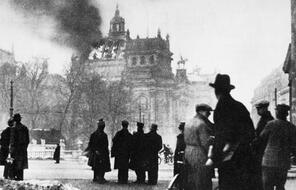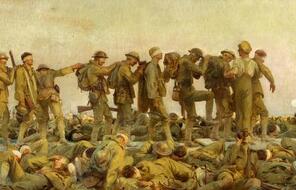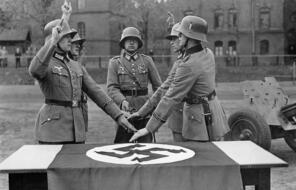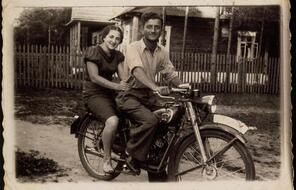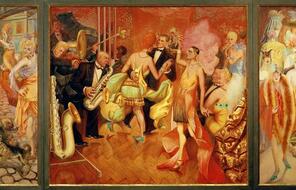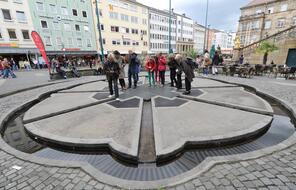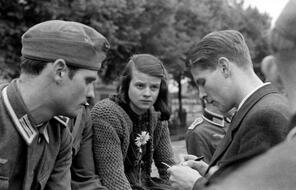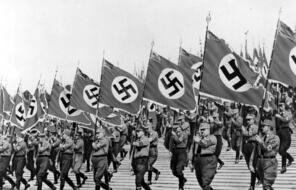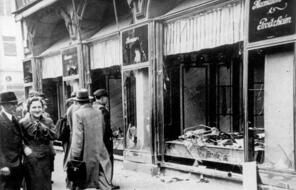As the War Ended
Subject
- History
Language
English — USUpdated
Eyewitness to Buchenwald
By spring 1945, the Americans and the British were entering Germany from the west as the Soviet army continued to advance from the east. A few days later, US General Dwight D. Eisenhower, the supreme commander of the Allied forces in Europe, and US Generals Omar Bradley and George S. Patton, Jr., toured Ohrdruf, one of the first concentration camps the Americans liberated. Eisenhower later wrote, “I have never felt able to describe my emotional reactions when I first came face to face with indisputable evidence of Nazi brutality and ruthless disregard of every shred of decency. Up to that time I had known about it only generally or through secondary sources. I am certain, however, that I have never at any other time experienced an equal sense of shock.” 1 He went on:
I visited every nook and cranny of the camp because I felt it my duty to be in a position from then on to testify at first hand about these things in case there ever grew up at home the belief or the assumption that “the stories of Nazi brutality were just propaganda.” . . . I not only did so but as soon as I returned to . . . headquarters that evening, I sent communications to both Washington and London, urging the two governments to send instantly to Germany a random group of newspaper editors and representative groups from the national legislatures. I felt that the evidence should be immediately placed before the American and British publics in a fashion to leave no room for cynical doubt. 2
Eisenhower insisted that Germans from a nearby town visit the camp to see what had been done in their name. In addition, he required American soldiers to tour the camp, so that they could see the evil they were fighting.
The Red Army Enters Majdanek
Connection Questions
- How does Eisenhower describe his reaction to seeing the concentration camps toward the end of the war?
- Who did Eisenhower require to tour the concentration camps? Why was it important to him that each of those groups witnessed the camps?
- How do the ideas in the reading The Difference between Knowing and Believing, help you understand Eisenhower’s response to touring the camps, even though he had been previously informed of mass murder at the camps? How do the ideas in that reading help you understand why it was so important for the public to have evidence of Nazi atrocities?
How to Cite This Reading
Facing History & Ourselves, “As the War Ended”, last updated August 2, 2016.

